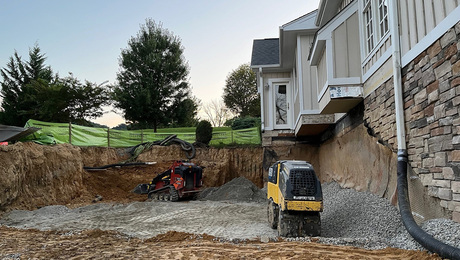I’m building a 30′ X 40′ insulated woodshop. Walls are 2 X 6. Bottom chord of the ceiling truss is also 2 X 6. We live at 5700 ft and get temps down to 0 sometimes in the winter.
I have two questions
1) If I use R-30 in the ceiling, the insulation is 9″ thick and will be 3 1/2″ higher than the top of the chord. Is this overkill or inefficient if I don’t plan to use blown in insulation between the batts (over the 2 X 6 chord)?
2) The center section of this shop will have attic storage so I’m adding an attic floor (5/8″ OSB). If I use R-30 in the center section, I will have to compress those last 3 1/2″ of insulation to keep it between the ceiling sheetrock and the attic floor. Is that more effective than using R-19 in the ceiling in the center section?
Thanks for any feedback…….


















Replies
Compressing fiberglass lowers the R value of the already marginal R30 you propose.
Consider Spray foam, which won't have any of these problems.
Good luck.
At the densities commonly used in commercially-available fiberglass insulation, compressing 9" of insulation to 6" will still yield somewhat more actual R value that using insulation designed to be 6" thick. And somehow closing off the "back" side of the insulation yields significantly better R value than if the insulation is left "open" and exposed to air circulation. So your plan to compress part of the insulation with an attic floor is not a show-stopper.
What you might want to consider is covering the un-floored insulation with something like Tyvek housewrap, to cut off air circulation through the fiberglass.
Or consider DIY blown-in cellulose for the whole thing.
I'm now rethinking this.....using R-19 in the ceiling. In the center section it would only compress the 1/2" when I add the attic floor. On the outside sections I'm now thinking to come back and add a few inches of blown in insulation on top of the R-19. The Tyvek is designed to keep moisture out from the outside but let moisture escape from the inside (I think) so I'd have to put it down in the right direction. Im wondering if adding the blown in insulation will help cut down most of the air circulation.
There is no "inside" vs
There is no "inside" vs "outside" for Tyvek -- it functions exactly the same either way. And this is true for virtually all materials -- the rate of humidity transfer is independent of direction. The only exception would be that some rain screen style materials are coated to shed liquid water better on one side vs the other.
Blown cellulose is a excellent air block, however, and would eliminate the need for an air barrier on top. (Blown fiberglass is not nearly as good in this regard.) But blowing cellulose on top of fiberglass is kind of silly, since the cellulose would compress the fiberglass significantly. Better to use cellulose exclusively.
Ok thanks for clearing up the Tyvek issue. I'll have to decide on the blown in insulation.
Thanks for the response.